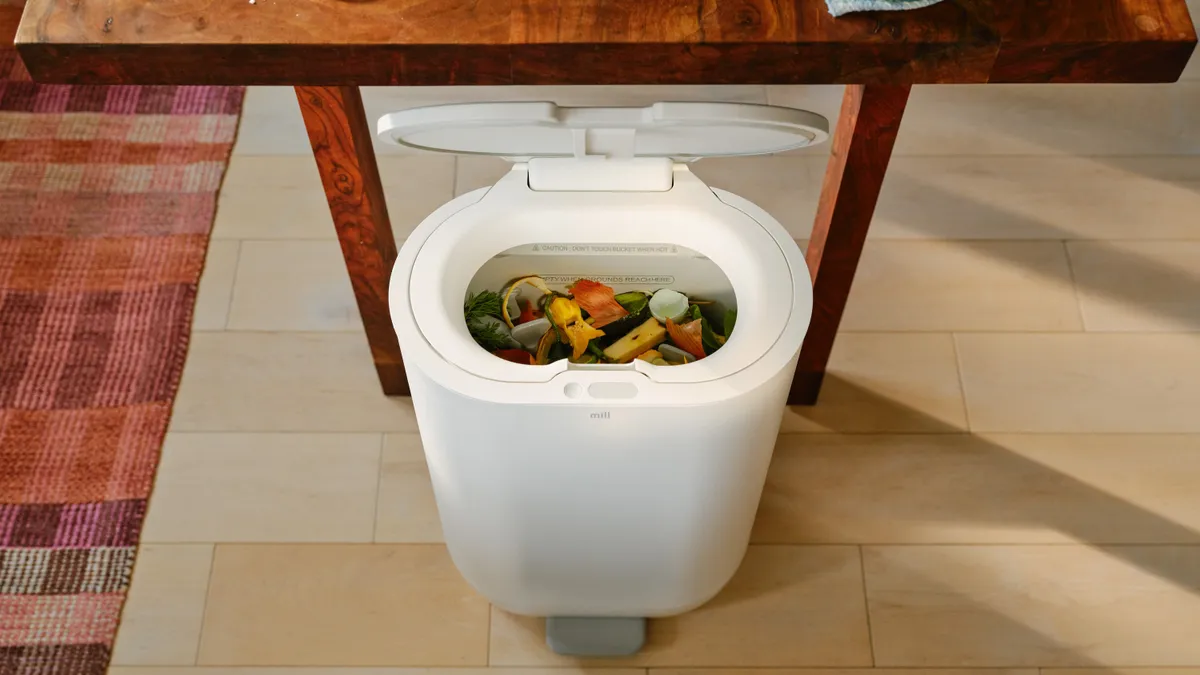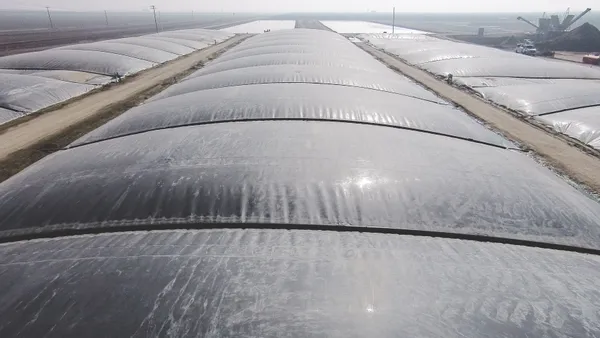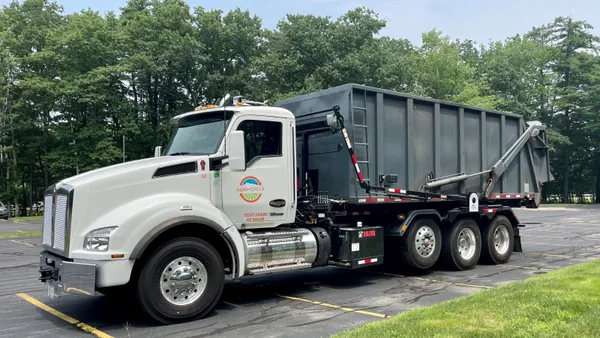Dive Brief:
- At-home food waste processor Mill says its devices processed about 2 million wet pounds of organics between April 2023 and May 2024, according to its first study of customer data. The company estimates customer households generated about 5.5 pounds of food scraps per week on average.
- Mill allows users to see real-time data about their food waste using an app. It found that users typically decreased their food scraps by about 20% over the first four months of use, with their waste rate plateauing after that period.
- "It's very difficult to improve things that aren't measured. That's why it was so critical to us to include feedback loops for measurement, so households are able to track their progress and take action to save time and money," Harry Tannenbaum, co-founder and president of Mill, said in a statement.
Dive Insight:
The device joins a growing category of consumer products designed to capitalize on rising food waste awareness.
That consciousness comes as new jurisdictions begin offering organic waste collection and consumers are increasingly sensitive to the impact of wasted food on their wallet. Food waste reduction nonprofit ReFED estimates consumers spend about $1,900 on wasted food annually.
Mill’s device looks like a waste bin but grinds and dehydrates food scraps, reducing the volume of waste by about 80%. The company’s 6.5-liter-capacity bin can process about 40 pounds of wet food before needing to be emptied, Mill says. The resulting product is then collected and typically sent to local farms for composting or animal feed.
Mill's leadership team, several of whom came from smart home company Nest, believes that showing consumers data about their behavior encourages them to be more conscientious about food waste. A customer who finds out they waste 50 pounds of food over a just a couple of months may want to change their behavior, Tannenbaum said in an interview at ReFED's Food Waste Solutions Summit last week.
"There’s no more room for grayness," he noted, envisioning customers saying to themselves, "Oh that’s 50 pounds? That's a lot."
While Mill’s data collection operation is unique, its commercial launch last year put it in an ecosystem of organic waste concierge services and microhaulers. In Phoenix, Mill is partnering with farm and pickup service R.City. The two entities will allow consumers to dehydrate their food waste in their Mill device and then have R.City pick up the dry grounds and use the material in its produce farming operation.
The collaboration adds to Mill’s processing capacity. Since first sending its products to customers in April 2023, the company has received a green light from both the Food and Drug Administration and the Association of American Feed Control Organization to have its dehydrated food scraps considered an acceptable animal feed ingredient. Mill partners with farms today to use its dehydrated organic product for chicken feed.
Tannenbaum said he hopes to continue partnering with the waste industry to find new haulers and destinations for its products.
“I think we’re interested in building circular loops and then building local loops,” Tannenbaum said. “Thinking about ways we can gel with the existing industry infrastructure … feels like a world where we can have a win-win for all parties involved.”











